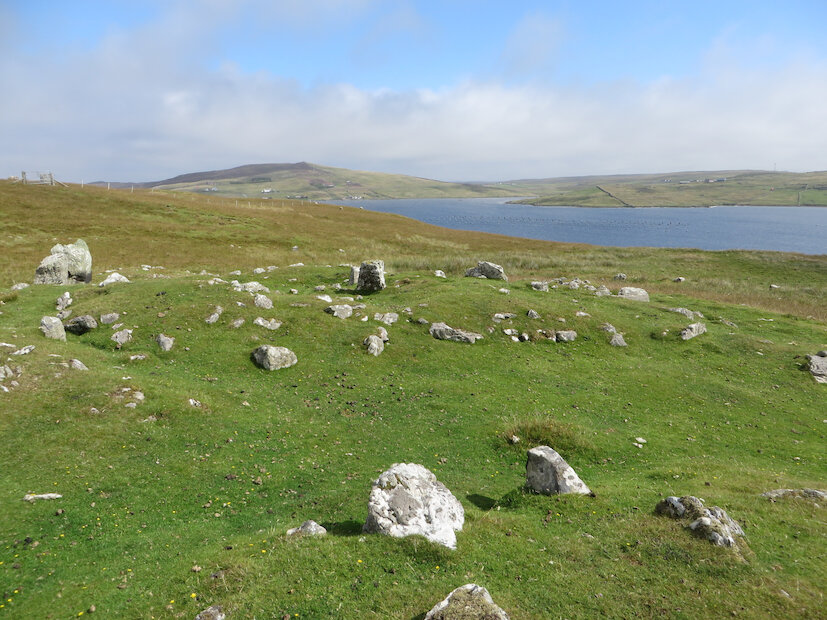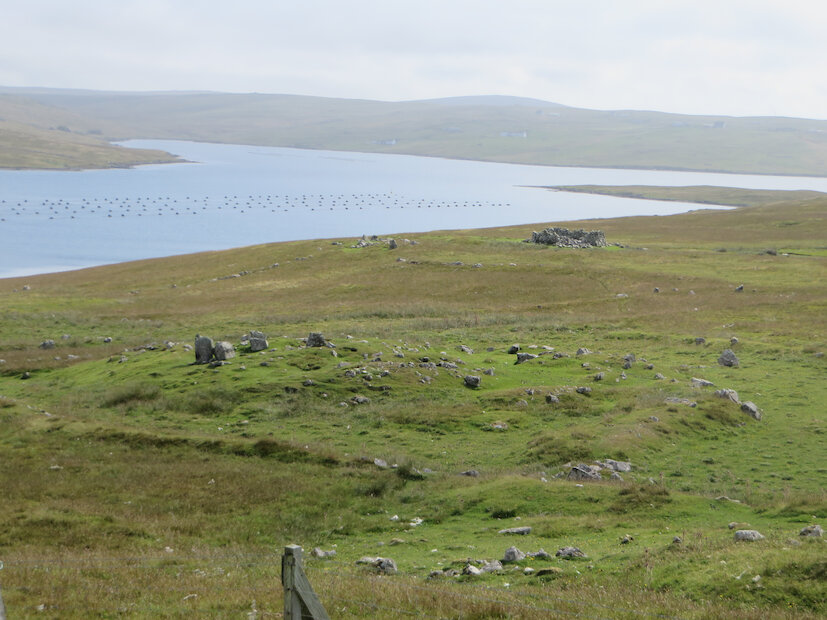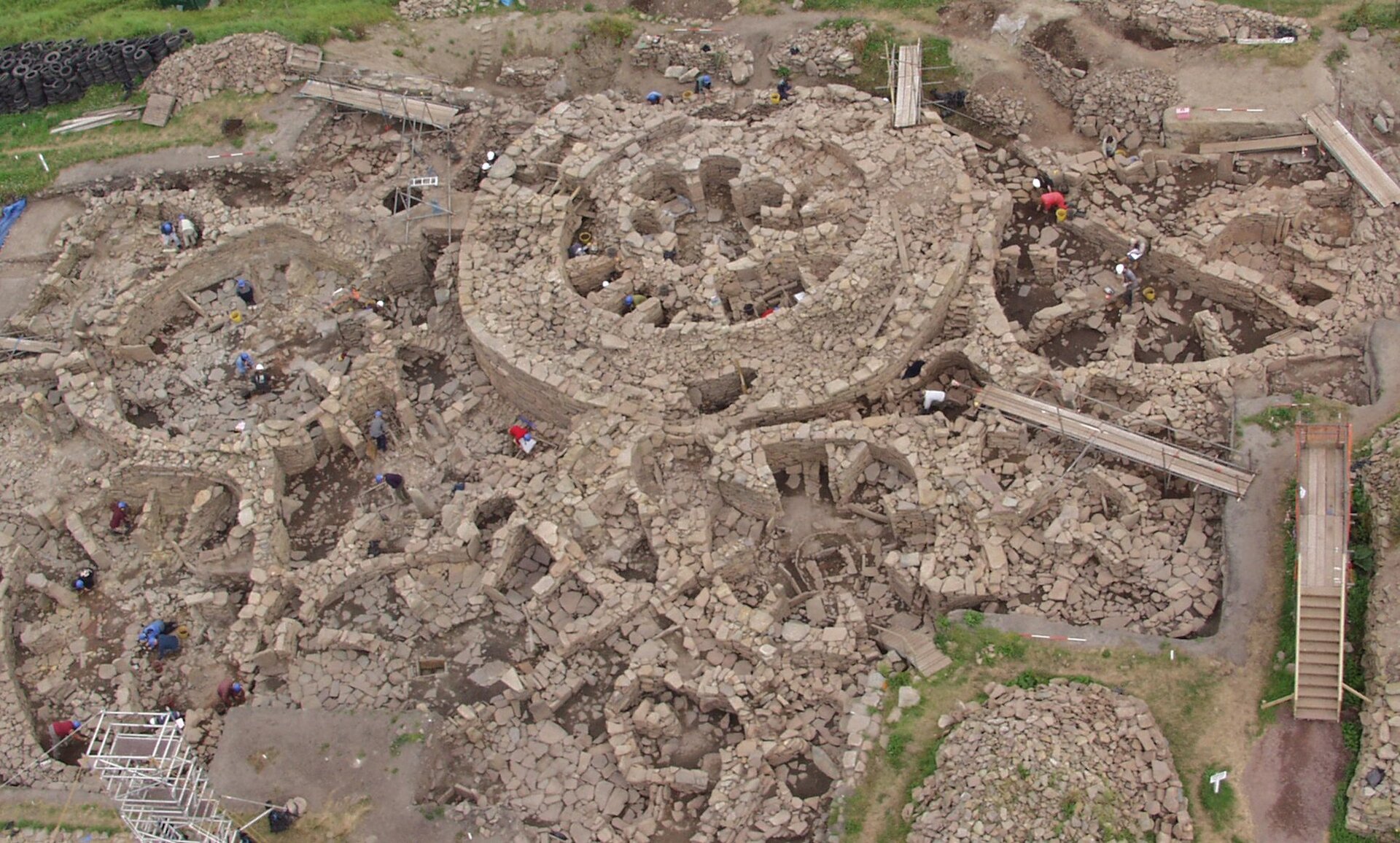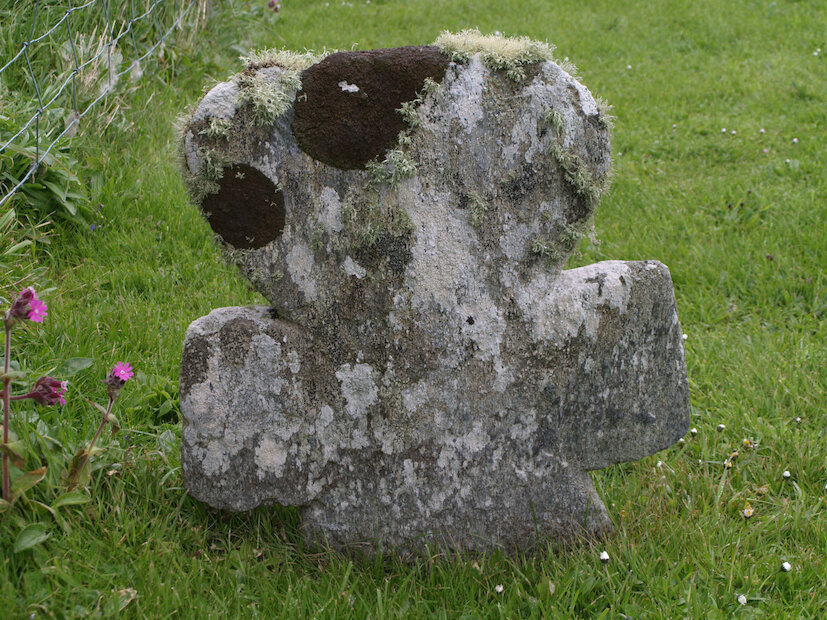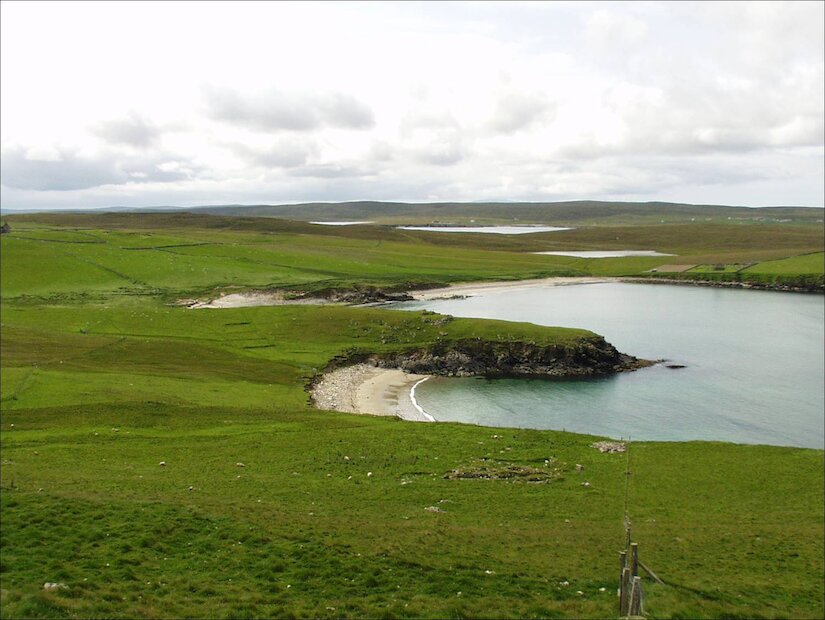People started farming in Shetland around five thousand years ago. As they cleared areas, they marked the edges of their fields with stones. They built their houses on the edges of the fields and buried their dead on higher spots nearby. They even built walls between the farms so that the hill-land was also clearly divided, presumably with rights of grazing, using the peat and quarrying stone for tools. Remarkably, and unparalleled elsewhere, the remains of these early farms are still visible in Shetland’s West Side.
Pinhoulland is a little off the beaten track, located on the slopes above the Voe of Broulland. This astounding site includes eight prehistoric houses picked out in stone, a burial cairn on a rise overlooking the site and a complex pattern of fields. Although it has never been excavated, the remains are easy to spot even if you aren’t an archaeologist.


